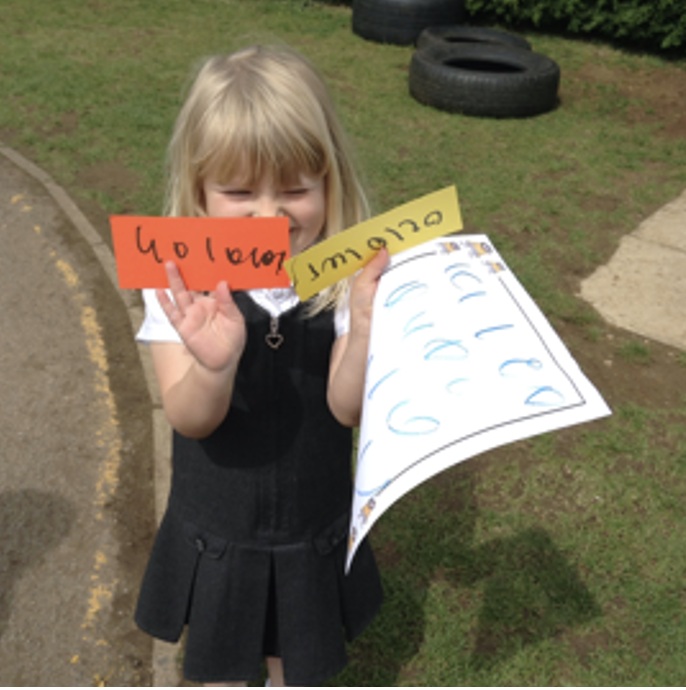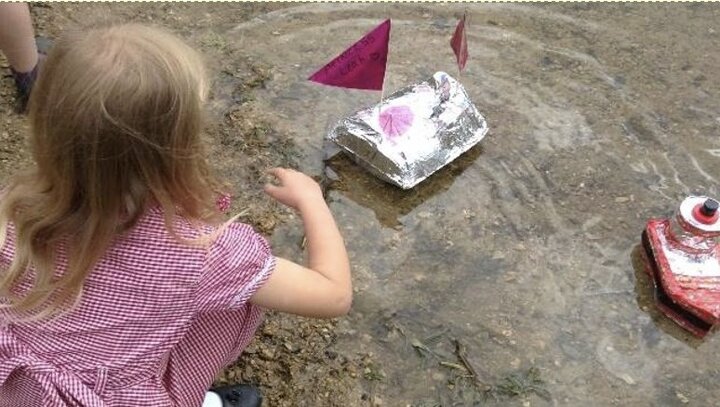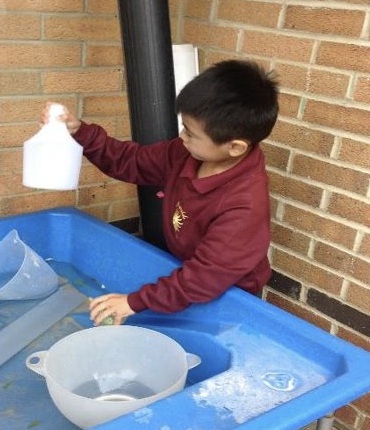The four specific areas strengthen your child's learning and development within the prime areas.

Literacy

We use Read Write Inc as our phonics scheme across the nursery and reception. This specific area enables children to start to use their sounds to support word building within reading and writing. The children begin to associate sounds with patterns in rhymes with syllables and with words and letters and they recognise their own names and some familiar words. In their writing they use pictures, symbols, familiar words, and letters to communicate meaning, showing an awareness of the different purposes of writing.
At Southwold, we love to mark make inside and outside on a small and large scale with lots of different materials- big sheets of card, notelets, writing paper, rolls of wallpaper, chalks… the list is endless! Children begin to write their names with appropriate use of upper and lower-case letters, with guidance from a 'name model' if necessary. The reception children at Southwold take part in a 20-minute session of Read, Write, Inc every day. The Nursery children enjoy daily story times, 'Tales Toolkit' sessions, rhyme times, music sessions, and Fred Games to support them in hearing sounds in their environment.
Reading In The Early Years
The Nursery and Reception children will take a high-quality text home on a weekly basis which will also be shared in school. Please use the diary to record story times with your child and any questions they have asked or wonderful language they have used. Please ensure books are returned to school and placed in the 'return box'.
Reception - You will receive a diary for your child. Please comment in the diary each time you hear your child read. We will also comment in these books. Reception children will also have 'rotten red words' and sound cards to bring home and we ask for your support in helping the children to learn these. Once your child knows all their sounds and can blend 3 and 4 sound words, your child will start to bring home a reading ditty, which will be worked on at home and in school. More information will follow.
Mathematics

This specific area covers important aspects of mathematical understanding and provides the foundation for numbers. It focuses on having a deeper understanding of numbers through subitising (recognising quantities without counting), representing with maths equipment, loose parts, and mark making, and being able to investigate through problem solving.
Children recognise, build, and recreate patterns and models. They are familiar with numbers, songs, rhymes, stories, and counting games. They compare, sort, recognise and use numbers up to ten and are familiar with larger numbers from everyday lives. Through practical activities, children start to understand and record numbers, begin to show awareness of number operations, such as addition and subtraction, and begin to use the language involved.
Understanding The World (Past And Present, People, Culture And Communities, The Natural World)
This specific area focuses on children's developing knowledge and understanding of their own environment and the environment of others. It provides a foundation for historical, scientific, and technological learning and exploration. Children are encouraged to talk about the lives of people around them and their roles in society. They will start to explore the past and compare them to now and will have rich opportunities to explore the natural world around them, asking questions and making observations.
One of our favourite days in the week is Welly Wednesday and Foraging Friday! This happens across the whole of the Early Years unit! The children enjoy exploring and recognising features of living things, objects, and events in the natural and made world and they look closely at similarities, differences, patterns, and changes. They talk about their observations sometimes recording them and asking questions to gain information about why things happen and how things work.
Expressive Arts and Design
This specific area focuses on the development of children's imagination, storytelling, and their ability to communicate and express ideas and feelings in creative ways through their play. Children explore sound, colour, texture, shape, form, and space in two and three dimensions. They respond in a variety of ways to what they see, hear, smell, touch, and feel. Through art, music, dance, imaginative play, and stories, they show an increasing ability to use their imagination, to listen and observe. They use a widening range of materials, suitable tools, instruments, and resources to invent, express ideas, and communicate their thoughts.


